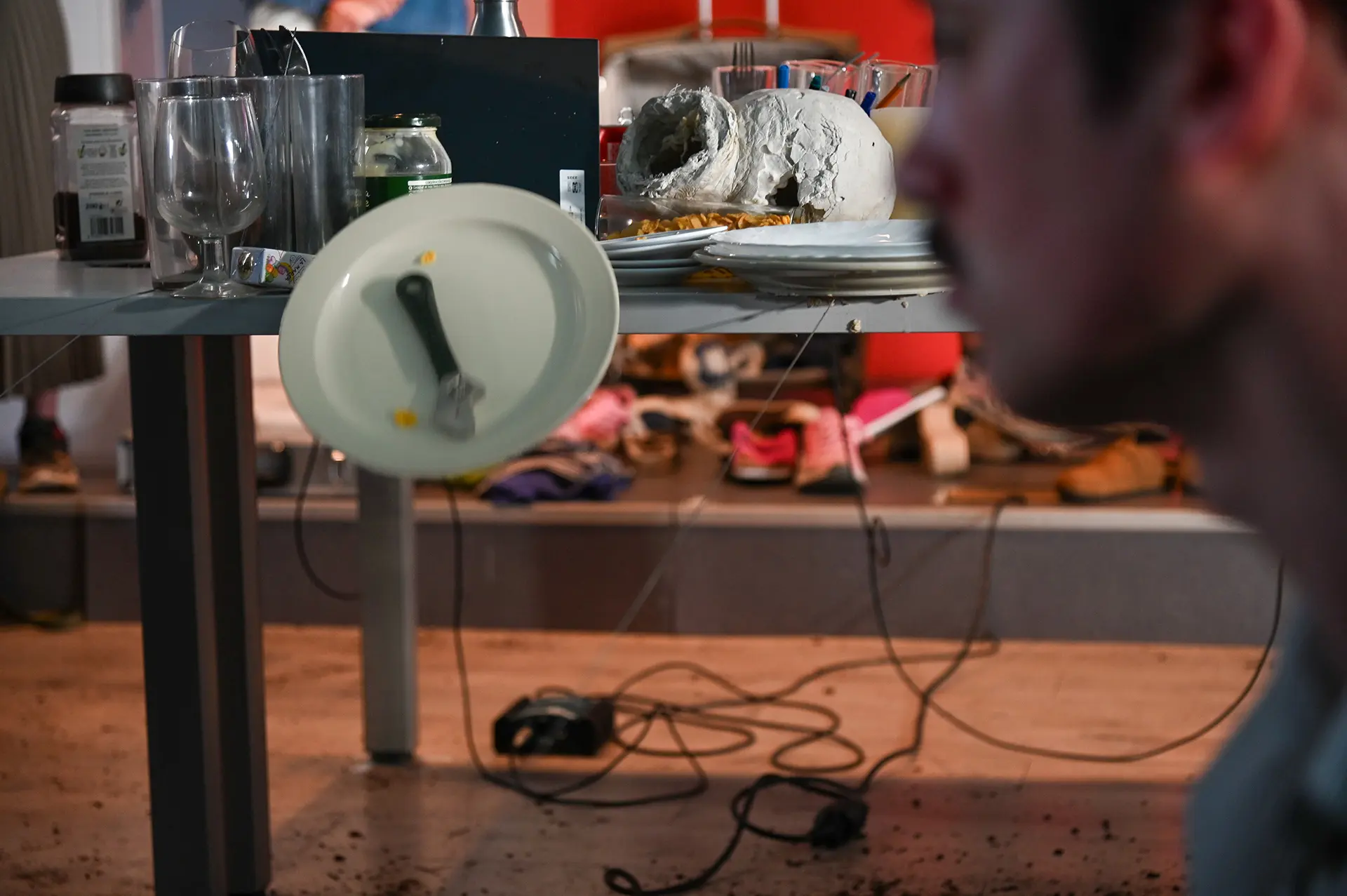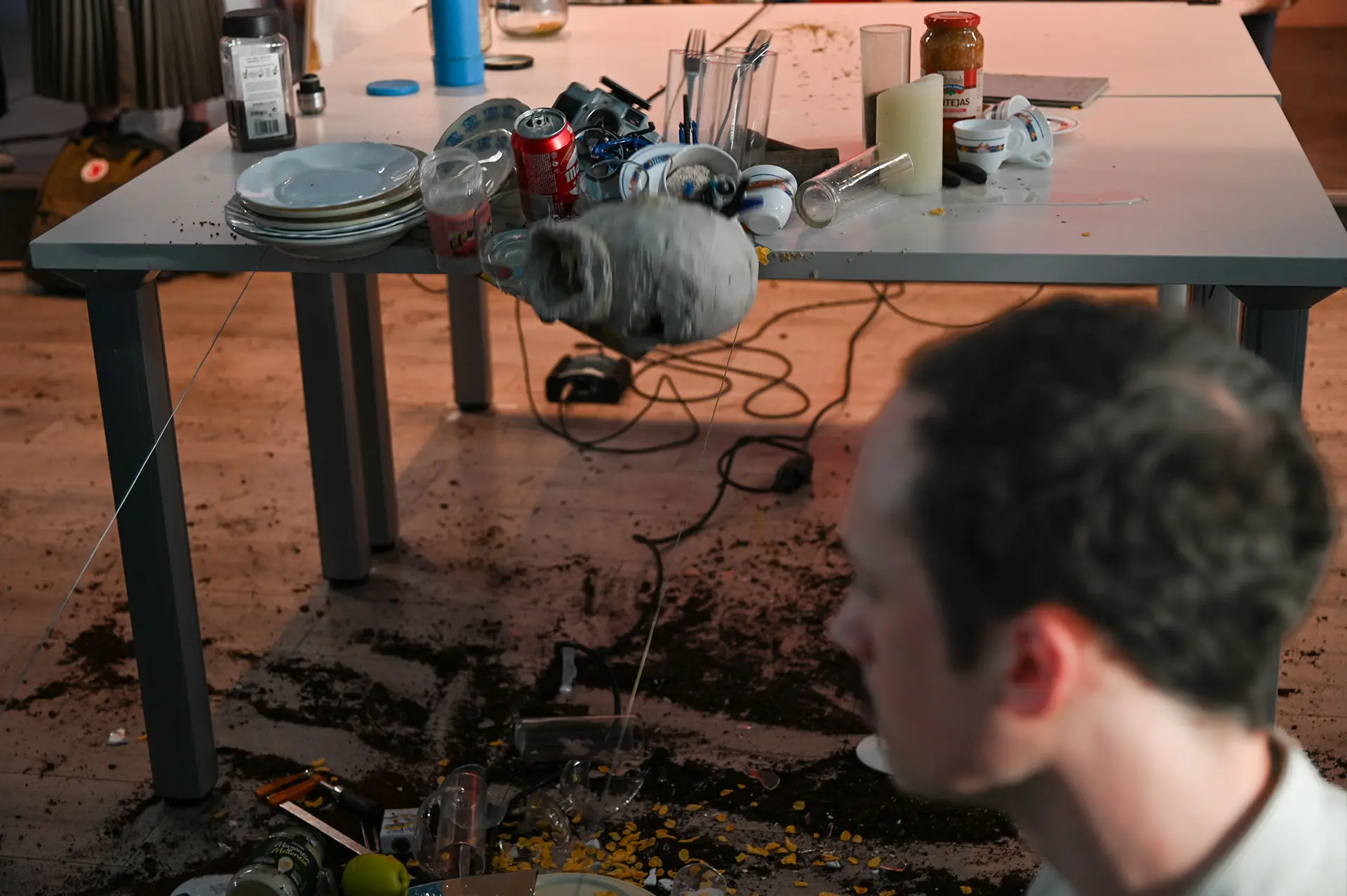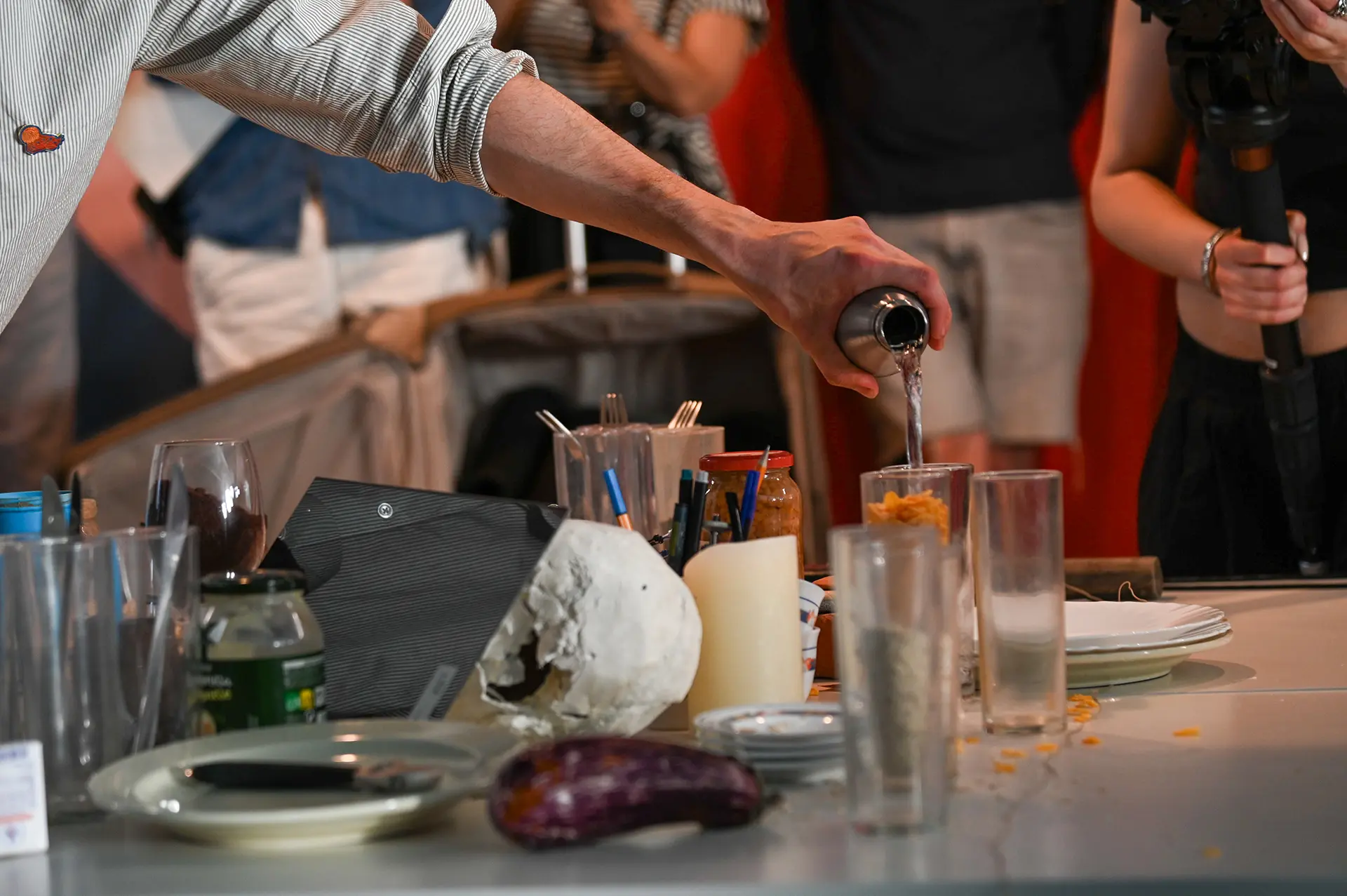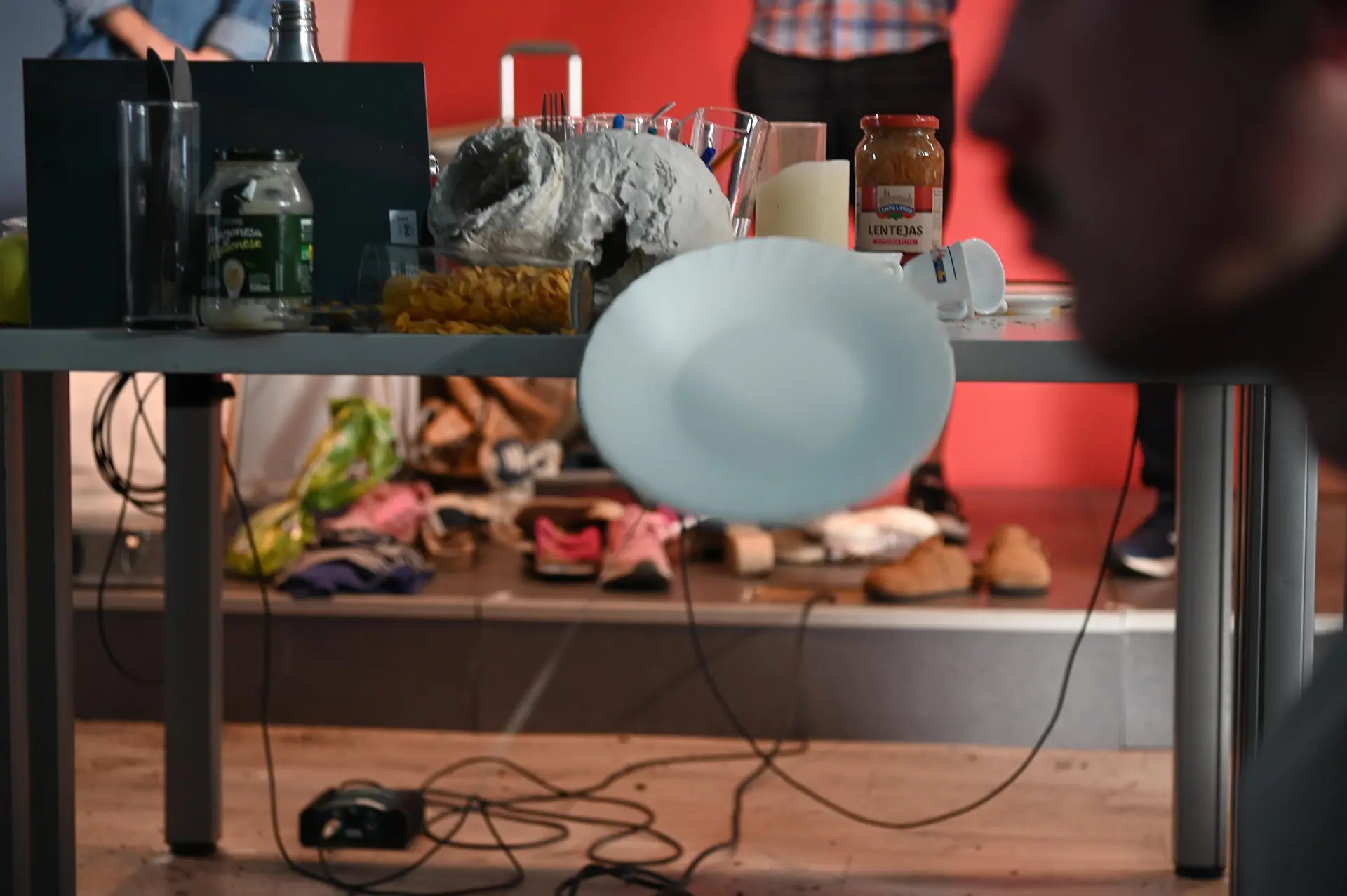The table fills with objects. Glasses, cups, plates—common, everyday items—mix with memories, personal belongings, and decorative pieces. In front of it, a motor with a counterweight is placed. As the motor turns, it will gradually pull a wooden rod connected to it by a cable, located at the opposite end of the table, dragging everything off the surface and onto the floor. The performer, positioned beside the motor, is responsible for winding a second cord—a necessary participant in the mechanism, part of the gearwork that brings everything crashing down.
After fifteen minutes, everything will have fallen to the ground, and the performance will come to an end. Even though we know the outcome from the beginning—that all the objects will fall and shatter on the floor—there is something about the action that captivates us. The vertigo of the fall, the morbid thrill of watching things break, the looming risk of collapse. We watch it as if it were something foreign. As if we weren’t the ones falling, or the ones the objects fall upon. As if we weren’t part of the very gears that bring it all down.




